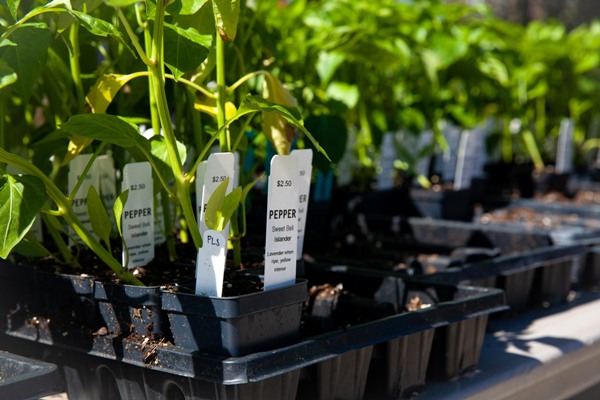Gratitude from The Gardens
by Michelle Provaznik, Executive Director
To our Gardens friends and family -
On behalf of the entire Gardens on Spring Creek team, thank you. Your support over the last two months, and especially over the last two weeks during our Spring Plant Sale, has been simply amazing. As I was loading plants into your cars, several of you asked how things were going so I wanted to update you on several things.
This year’s virtual Spring Plant Sale was the absolute best ever! Here are some stats:
- Total sales: $118,048
- Total plants sold: 28,005
- Total plants grown by The Gardens: 25,633 or 92%
- Number of orders filled: 1,849
Pulling this event off without our beloved volunteers was no
small feat. The small, yet mighty
Gardens staff did an outstanding job growing beautiful plants, tagging them,
building the shopping website, fulfilling orders and developing a curbside
pickup plan in six short weeks – all while keeping socially distant. My deepest appreciation to everyone on our
team for stepping up and leaning in to get it done – with fantastic results.
Thank you also to our partners at Colorado State
University. They did a beautiful job
growing many of the annuals and all the hanging baskets available – without the
help of their practicum students. We are
grateful for this long-standing partnership.
Our thanks to everyone who renewed or became Members in
recent weeks. Memberships are absolutely
critical to organizations like ours and during this particular time as budgets
continue to become more challenging. We
are grateful for your financial support and belief in our mission.
While our focus has been the Plant Sale, please know that we
are working behind the scenes on a reopening plan. I am in regular communication with public
gardens around the state, region and country on best practices to re-open
gardens. In addition, we are making
changes to align with CDC, State of Colorado and Larimer County guidelines so
we can re-open as safely as possible.
Our gardens are filled with hope, healing, learning and inspiration. They are a place to connect with the beauty of nature – all things we need now more than ever. We look forward to welcoming you back to The Gardens on Spring Creek soon. When we have more information, you will be the first to know.


